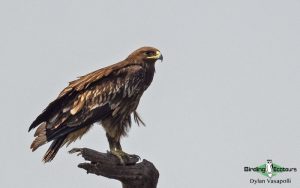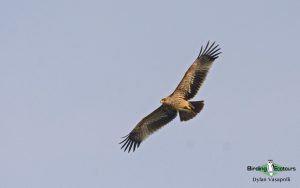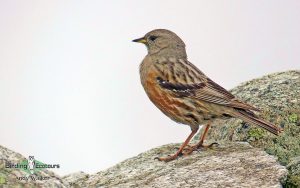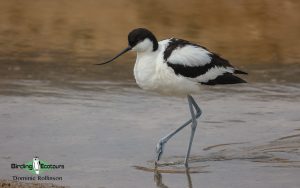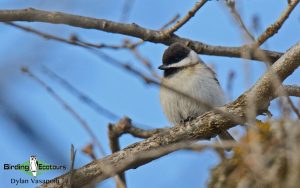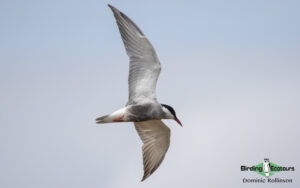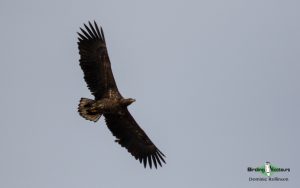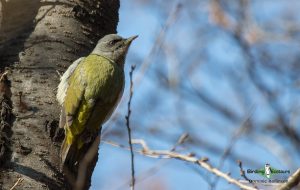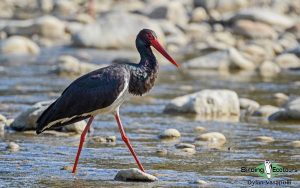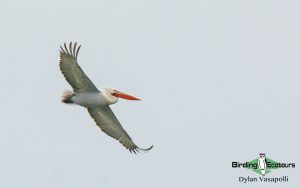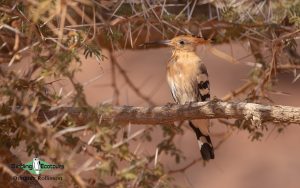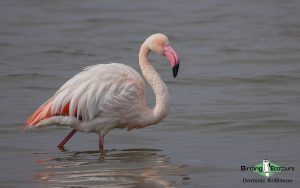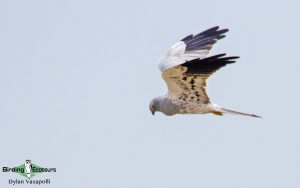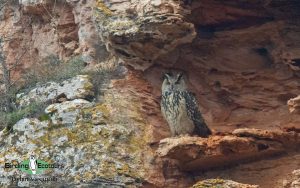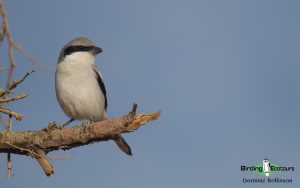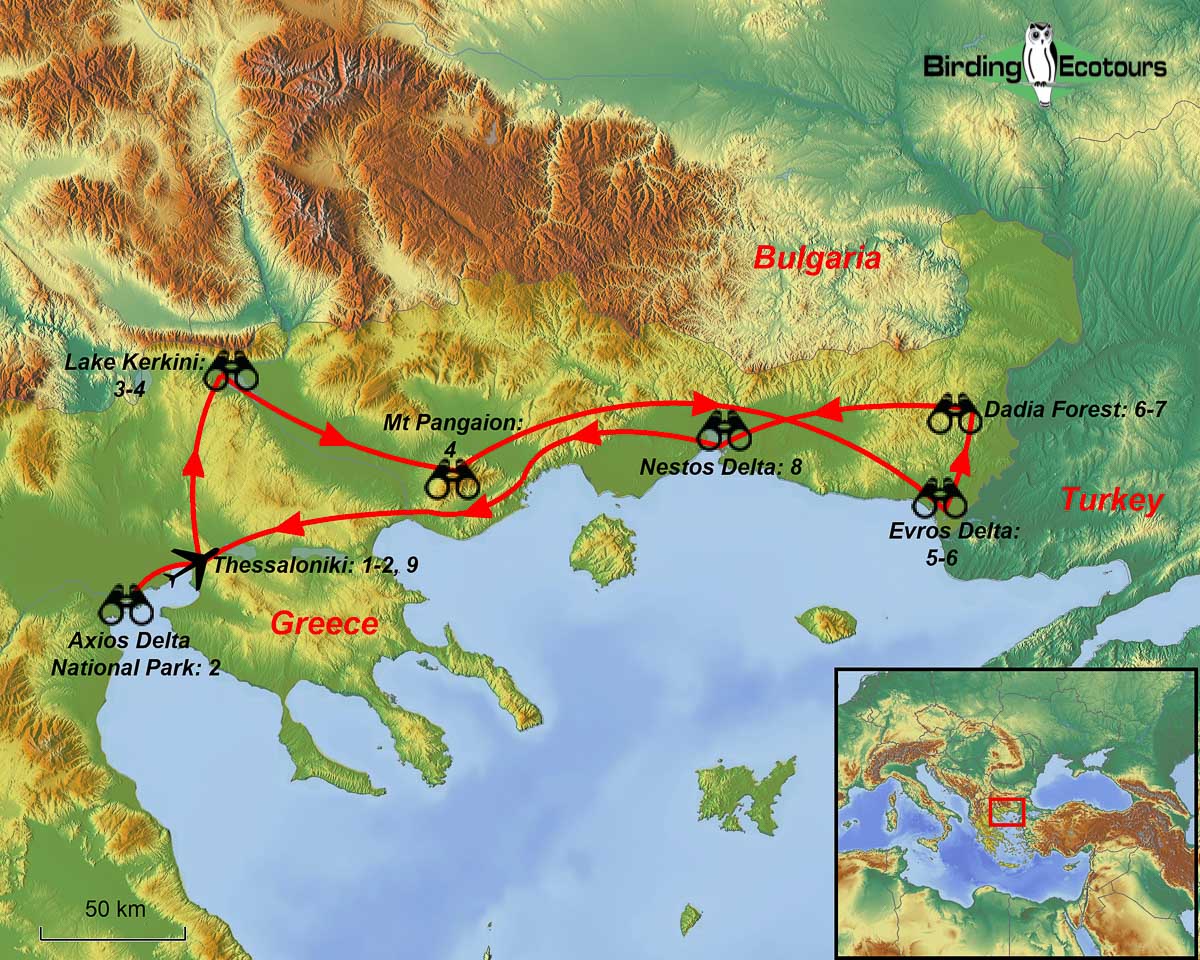Greece: Fall Birding Adventure
Greece Birding Tour: Fall Birding Adventure
Northern Greece often falls under the radar for birders looking for a good birdwatching holiday, with other parts of Europe grabbing far more of the headlines. However, for those in the know, Greece is incredible value and packed full of wonderful birds. Our nine-day, small group, fall tour will discover the best birds, sites, and scenery that the northern part of this ancient country, close to the borders of Bulgaria and Turkey, has to offer.
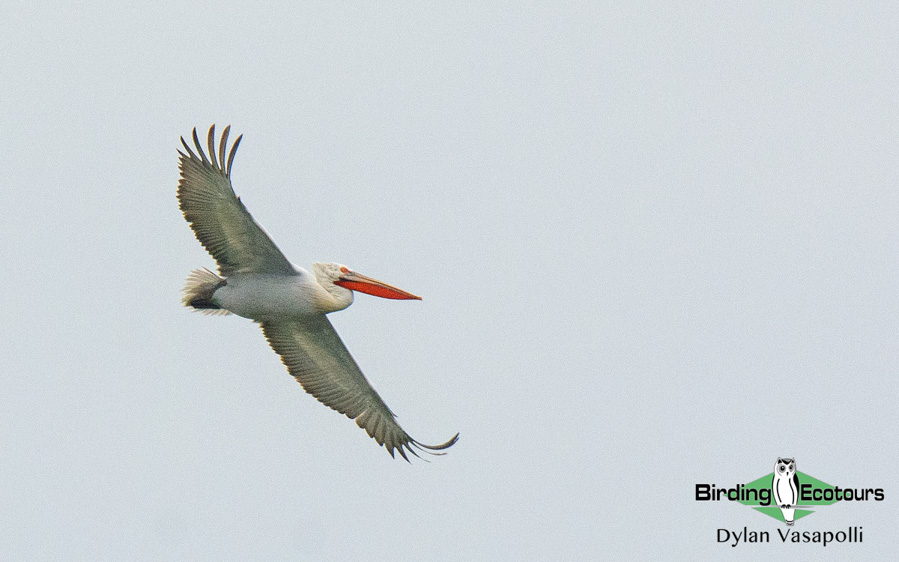
We begin our tour in Thessaloniki on the Aegean coast, from here we will head to the nearby Axios Delta National Park. This vast delta has recorded almost 300 species of birds and is just one of many hidden gems in northern Greece. Its value as a stopover for migratory birds is huge and we can expect to see a range of waterfowl, shorebirds (waders), gulls, terns, and passerines while here. Key species found in the delta in fall include Slender-billed Gull, Black Stork, Pygmy Cormorant, Dalmatian Pelican, Moustached Warbler, and Ferruginous Duck.
We will then head to the beautiful Lake Kerkini, an Important Bird Area (IBA) identified by BirdLife International as extremely valuable for birds (and one of several IBAs we visit on this tour). The lake offers wonderful opportunities to view large numbers of the Near Threatened (BirdLife International) Dalmatian Pelican and the tiny Pygmy Cormorant. The lake itself should also be teeming with wintering waterfowl, including the Vulnerable (BirdLife International) and rapidly declining Lesser White-fronted Goose, plus migrating shorebirds (waders), herons, egrets, and birds of prey.
The surrounding forest is home to six woodpecker species, including Syrian Woodpecker, Grey-headed Woodpecker, and Middle Spotted Woodpecker. If the weather allows, we will also explore the nearby Mount Pangaio in search of higher-altitude species such as Alpine Accentor, Alpine Chough, Horned Lark, Rock Partridge, Water Pipit, and Black Redstart.
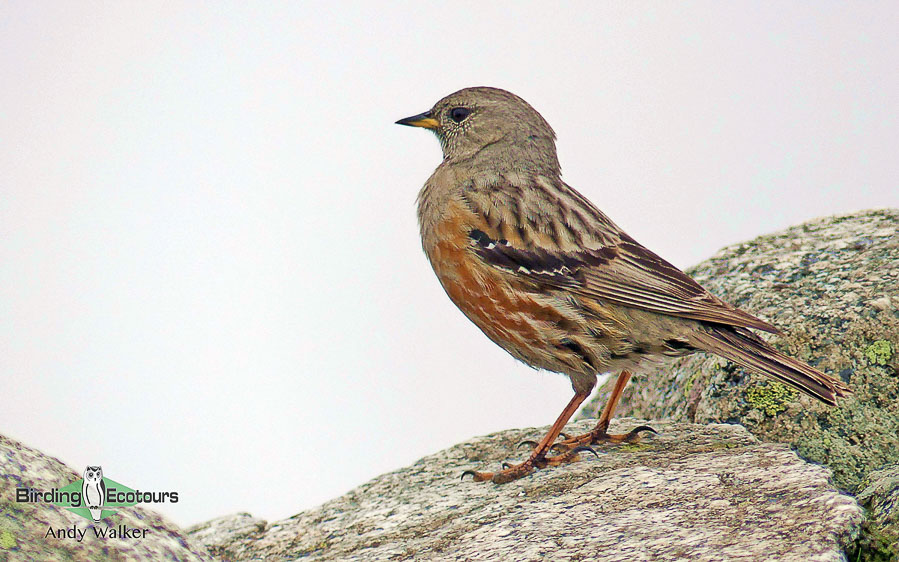
We then move to another gem of a location, the Evros Delta. En route we may make another attempt at visiting Mount Pangaio, if we were unable to make the ascent previously. While at the Evros Delta we will meet local guides, who will give us an in-depth look at the management of the area. Like the other deltas in northern Greece, this area is a vital stopping point for migratory birds and is also a superb area for finding wintering species.
Many of the species found here are found elsewhere on our tour, but the Evros Delta is the best site to find wintering Lesser White-fronted Goose, Red-breasted Goose, and Greater Spotted Eagle, all of which are classed as Vulnerable by BirdLife International. Due to its proximity to the excellent Dadia National Park, which we will visit later in the tour, the delta is a superb area for finding migrating raptors such as Western Osprey, Western Marsh Harrier, and Eastern Imperial Eagle, plus others. We may also glimpse some of the delta’s elusive mammal species including (European) Wild Cat, (European) Grey Wolf, and (Central European) Wild Boar.
Our next stop is the remote Dadia Forest. This beautiful area is regarded as the best location in Europe for raptors, with 35 out of the possible 38 diurnal European raptor species recorded here, along with seven out of the nine European owl species. While in the forest we will visit a vulture feeding station where we can watch these amazing birds in their feeding frenzies. This activity should give us great views of Griffon Vulture, Cinereous Vulture, and possibly Egyptian Vulture. Other key raptors found here are Golden Eagle, Booted Eagle, European Honey Buzzard, and Levant Sparrowhawk, but it really is a location where anything could turn up during our visit.
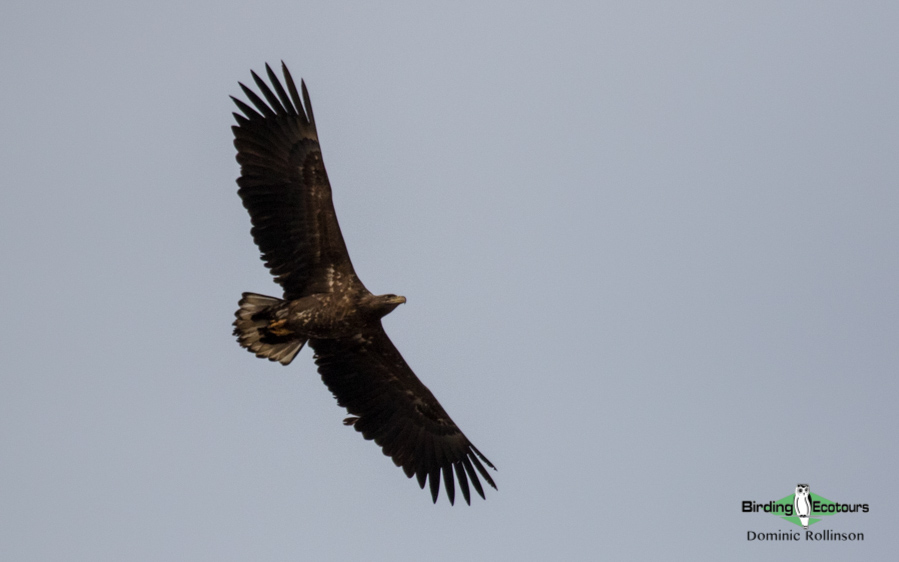
Our final birding destination on the tour is the Nestos Delta and the adjacent Lake Vistonis. Another vital migratory staging post and wintering area, this site sees vast numbers of birds arrive during October. The range of birds in the area is huge and we will come across multiple species of shorebirds (wader), waterfowl, passerines, gulls, terns, and birds of prey. We will also explore the inland areas around the Nestos Gorge for Rock Partridge, Rock Bunting, Cirl Bunting, and Sombre Tit and we may get lucky in spotting the striking Golden Jackal, a species of canid whose range spreads from Eastern Europe all the way to Southeast Asia. We will finish up this tour by driving back to Thessaloniki, where the tour ends, and you can catch a flight back home.
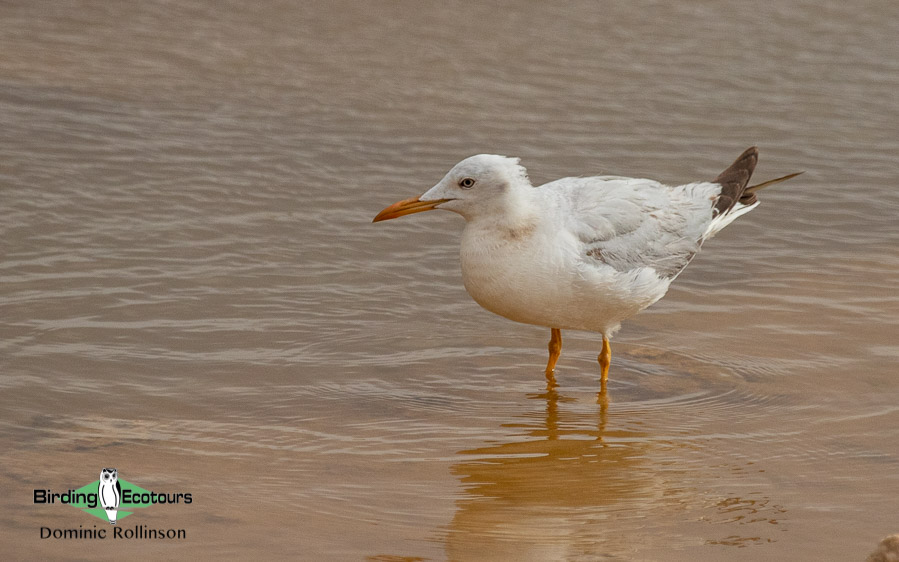
Itinerary (9 days/8 nights)
Day 1. Arrival in Thessaloniki
Welcome to northern Greece! Upon your arrival at Thessaloniki International Airport, you will be met by your Birding Ecotours tour leader and local Greek bird guide. We will then transfer you to our nearby hotel and you will have the rest of the day to spend as you wish, including some sightseeing if the mood takes you. Once the whole group arrives, we will meet for a welcome dinner and our first taste of fabulous Greek food, as we discuss the exciting trip ahead.
Overnight: Thessaloniki
Day 2. Axios Delta National Park
After breakfast we will begin our first full day at the superb Axios Delta National Park, a short drive from Thessaloniki city. As we explore the beautiful habitats, we will keep our eyes open for a wide range of waterfowl, shorebirds (waders), passerines, egrets, herons, and birds of prey. The species list here is huge so we have included the main highlights of a typical fall visit here.
Birds of prey are a key feature of fall in Greece and we could come across Western Marsh Harrier, Eurasian Sparrowhawk, Common Buzzard, Osprey, Common Kestrel, Merlin, Hen Harrier, Peregrine Falcon, and Greater Spotted Eagle while exploring the delta. The Axios Delta is also well known for its wintering waterfowl and, like the birds of prey, there is a significant range of species available here, with Common Pochard, Ruddy Shelduck, Ferruginous Duck, and Northern Pintail being some of the highlights.
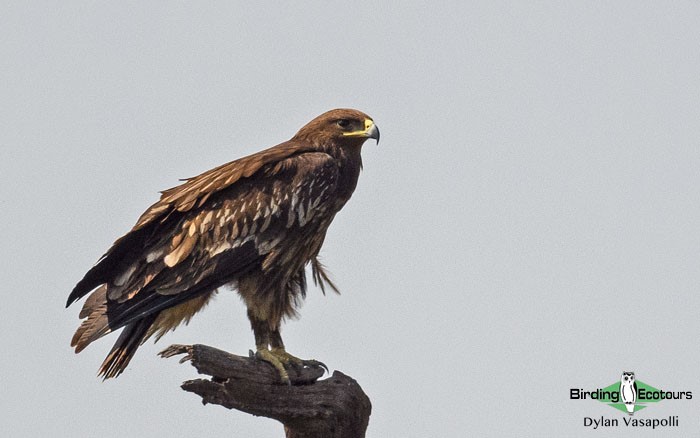
The delta also sees an influx of shorebirds (waders) during the fall, with Eurasian Oystercatcher, Grey Plover, Eurasian Curlew, Dunlin, Common Snipe, Green Sandpiper, Spotted Redshank, Common Greenshank, Wood Sandpiper, and Common Redshank all regular here. We should also come across the striking Spur-winged Lapwing, a range-restricted species in Europe.
The delta is also an excellent place to come across some interesting passerines, with common species like Common Chiffchaff, Cetti’s Warbler, and Eurasian Blackcap supported by scarce species like Moustached Warbler and Red-throated Pipit.
There are plenty of other exciting species that are considered prime targets while we are in the Axios Delta which include Slender-billed Gull, Greater Flamingo, Water Rail, Black Stork, Eurasian Spoonbill, Spanish Sparrow, Eurasian Stone-curlew, Gull-billed Tern, Eurasian Penduline Tit, Zitting Cisticola, and we will even have the chance of finding rarities like Marsh Sandpiper and Pallid Harrier.
After a bird-filled day we will return to our comfortable hotel in Thessaloniki and enjoy yet more fabulous Greek food.
Overnight: Thessaloniki
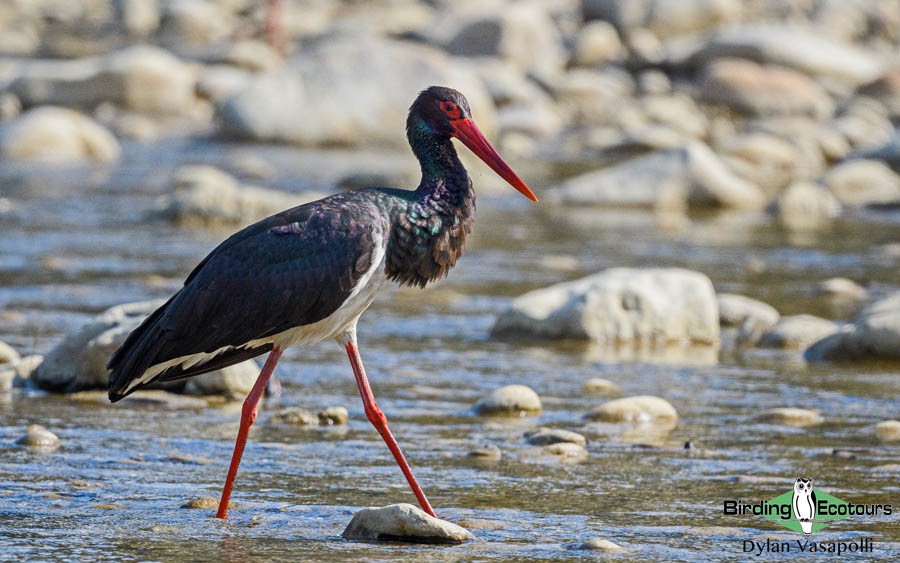
Days 3 – 4. Lake Kerkini and surrounding area, including Dalmatian Pelican
After another hearty breakfast we will prepare to leave Thessaloniki and head north into the wilder areas of northern Greece around Lake Kerkini, this area is simply magical and we will enjoy spending two full days here. An early morning sitting by the shore, watching pelicans, egrets, and herons, is a real pleasure. The lake and the surrounding area have a bird list of over 300 bird species, and we will enjoy looking for a good selection of these.
Lake Kerkini is home to two of Europe’s most iconic species, the Near Threatened (BirdLife International) Dalmatian Pelican and the odd-looking and fairly localized (in Europe), Pygmy Cormorant, both top targets. While at the lake we will take a boat trip to get close views of these two fascinating species, plus several others that call the lake home. Your Birding Ecotours tour leader will guide you through the best ways to photograph these stunning birds, with the still water of the lake giving the opportunity for sensational photos, we may even have snow on the mountains behind the lake, to really add to the ambience!
The lake itself also holds high numbers of wintering waterbirds and wildfowl, including Great White Pelican, White Stork, Great (White) Egret, Eurasian Spoonbill, Great Cormorant, Greater Flamingo, Common Pochard, Ferruginous Duck, Great Crested Grebe, Black-headed Gull, Glossy Ibis, and the Vulnerable (BirdLife International) Lesser White-fronted Goose – this species is, unfortunately, in rapid decline.
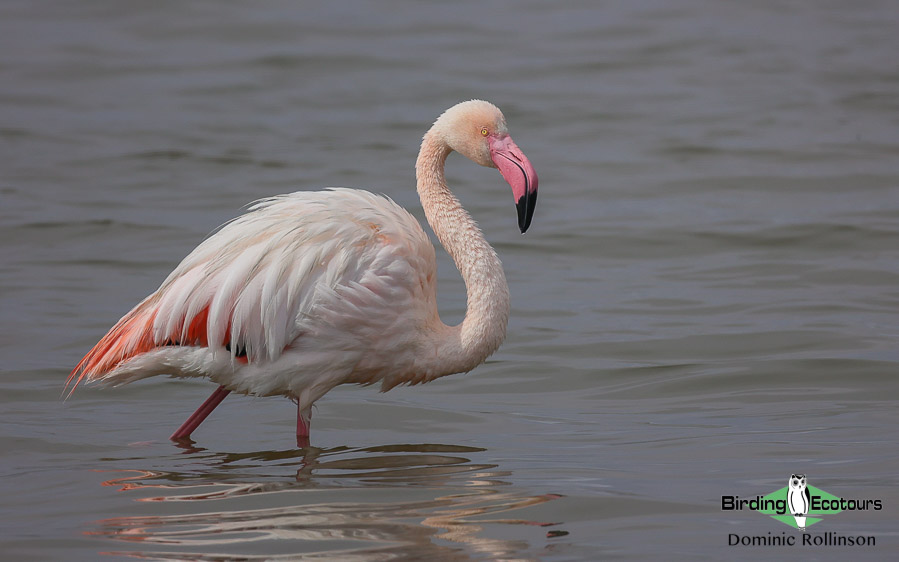
The surrounding forest area holds a wonderful diversity of passerines as the arrival of winter migrants adds to a healthy list of resident species. While exploring the area we will look for Willow Warbler, Spotted Flycatcher, Sombre Tit, Long-tailed Tit, Eurasian Jay, Eurasian Blue Tit, Mistle Thrush, Eurasian Nuthatch, Short-toed Treecreeper, Hawfinch, Eurasian Siskin, Common Firecrest, and Brambling. The forest is also home to several woodpecker species with Middle Spotted Woodpecker, Great Spotted Woodpecker, Lesser Spotted Woodpecker, Syrian Woodpecker, and Grey-headed Woodpecker all common here. The final forest highlight is the rather attractive Western Rock Nuthatch which is present here.
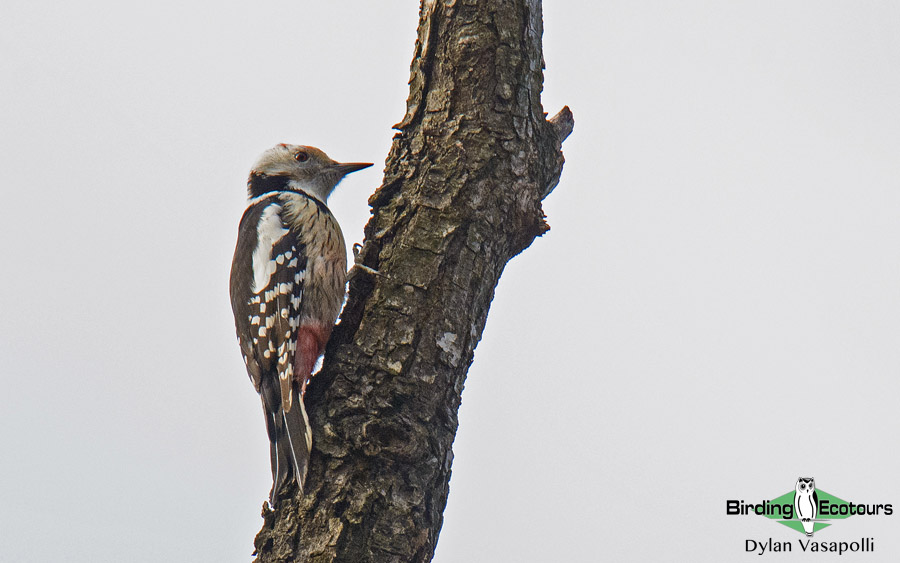
While around Lake Kerkini we will make a trip to nearby Mount Pangaio (weather permitting) to try and find some great alpine species. This will be our only high-altitude birding on the tour and we will maximize our time looking for Alpine Accentor, Alpine Chough, Horned Lark, Rock Partridge, Water Pipit, and Black Redstart, plus others.
Overnight (two nights): Lake Kerkini
Day 5. Lake Kerkini and transfer to Evros Delta
We will leave Lake Kerkini and make the trip east along the Aegean coast to the Evros Delta, which sits on the border with Turkey. Here we have the chance of some real European rarities and we will have a full day in the area tomorrow too. On the way to the delta, we will possibly stop at Mount Pangaio once again, if the weather has been unkind to us on previous days.
Once at the Evros Delta, we will get straight into birding this large site. The delta’s varied habitats result in a vast bird list and this makes it one of the premier sites in southern Europe. The Evros Delta is perhaps most famous as the wintering grounds for three Vulnerable species (as classified by BirdLife International): Red-breasted Goose, Lesser White-fronted Goose, and Greater Spotted Eagle and we will look for all three of these during our time here.
While at the delta we should also see good numbers of shorebirds (waders) with Eurasian Oystercatcher, Pied Avocet, Eurasian Stone-curlew, Grey Plover, Curlew Sandpiper, and Black-tailed Godwit being the most numerous.
Overnight: Evros Delta
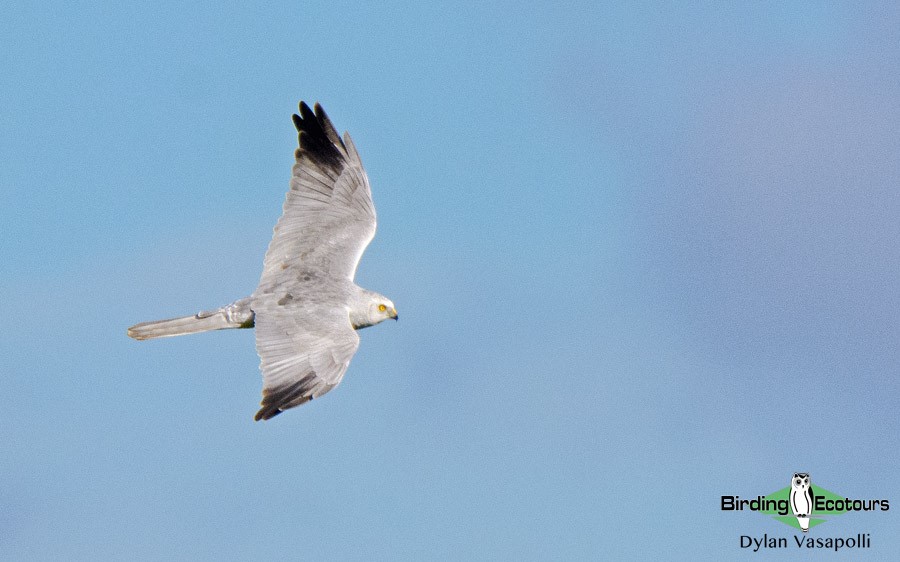
Day 6. Evros Delta, transfer to Dadia Forest
Today we will have a full day in the Evros Delta before transferring to the Dadia Forest in the evening. It is mostly the sheer variety of birds that makes the Evros Delta so enjoyable for birders. With over 260 species recorded here throughout the year, and around 120 during the period we are visiting, there is a large range of species for us to look for, and it promises to be a hugely enjoyable part of the tour.
The delta lies right in the path of the wild Dadia Forest National Park. This makes it a superb location for migrating raptors and we stand a chance of seeing Eastern Imperial Eagle, Lesser Spotted Eagle, Pallid Harrier, Long-legged Buzzard, Red-footed Falcon, Merlin, and Hen Harrier, plus others.
Notable species we will also be looking out for in the delta include, Eurasian Bittern, Greater Flamingo, Ferruginous Duck, Ruddy Shelduck, Spur-winged Lapwing, Marsh Sandpiper, Black Stork, Whiskered Tern, Eurasian Penduline Tit, Moustached Warbler, and Bearded Reedling (Bearded Tit). The site’s location also makes it capable of throwing up a surprise and in recent years Siberian Stonechat, Parasitic Jaeger (Arctic Skua), Common Eider, and Pallas’s Gull have all been found here.
In addition, we may also glimpse some of the delta’s elusive mammal species including (European) Wild Cat, (European) Grey Wolf, and (Central European) Wild Boar.
Overnight: Dadia Forest
Day 7. The Dadia National Park
Dadia Forest National Park is one of the best places in Europe for the observation of birds of prey. A remarkable 35 out of the 38 diurnal raptors occurring in Europe have been recorded here, along with seven out of Europe’s nine owl species.
While the peak of this activity is during the spring months, and you can join us on our Birding Tour Greece: Spring Birding Adventure tour for this, the fall is still an excellent time to visit. Species we have a good chance of seeing in fall include Cinereous Vulture, Griffon Vulture, Golden Eagle, Hen Harrier, Eurasian Sparrowhawk, Black Kite, Common Buzzard, Common Kestrel, and Eurasian Hobby. Although less frequently seen, we still stand a chance of finding Pallid Harrier, Eastern Imperial Eagle, Lesser Spotted Eagle, Red-footed Falcon, and Long-legged Buzzard.
The forests here are also home to many more species and we will explore this ancient and remote part of Greece. Species we can find here include Eurasian Jay, Northern Raven, Woodlark, Hawfinch, Eurasian Siskin, Hooded Crow, Sardinian Warbler, Common Firecrest, Black Redstart, Grey Wagtail, Cirl Bunting, Great Grey Shrike, Black Stork, Syrian Woodpecker, Middle Spotted Woodpecker, Chukar Partridge, Eurasian Woodcock, Song Thrush, Mistle Thrush, Common Blackbird, European Robin, Eurasian Wren, Goldcrest, Eurasian Blue Tit, Great Tit, Common Chaffinch, European Goldfinch, European Greenfinch, and Common Linnet.
While in the national park, we will also visit a vulture feeding station. Vultures play a vital role in cleaning the environment of carcasses that may carry diseases that could pose a threat to the ecosystem and even humans. The reduction of free-range livestock and better veterinary practices in the region means that the vultures here can struggle to find food. Since 1987 the Dadia Forest National Park has run a supplementary feeding program on a weekly basis. The feeding is done with animals that have already died and plays a vital role in maintaining vulture populations in the area. As a result of this, we can get up close and personal with both Cinereous Vulture and Griffon Vulture while at the feeding station, we may also get lucky and have a visit from the Endangered (BirdLife International) Egyptian Vulture.
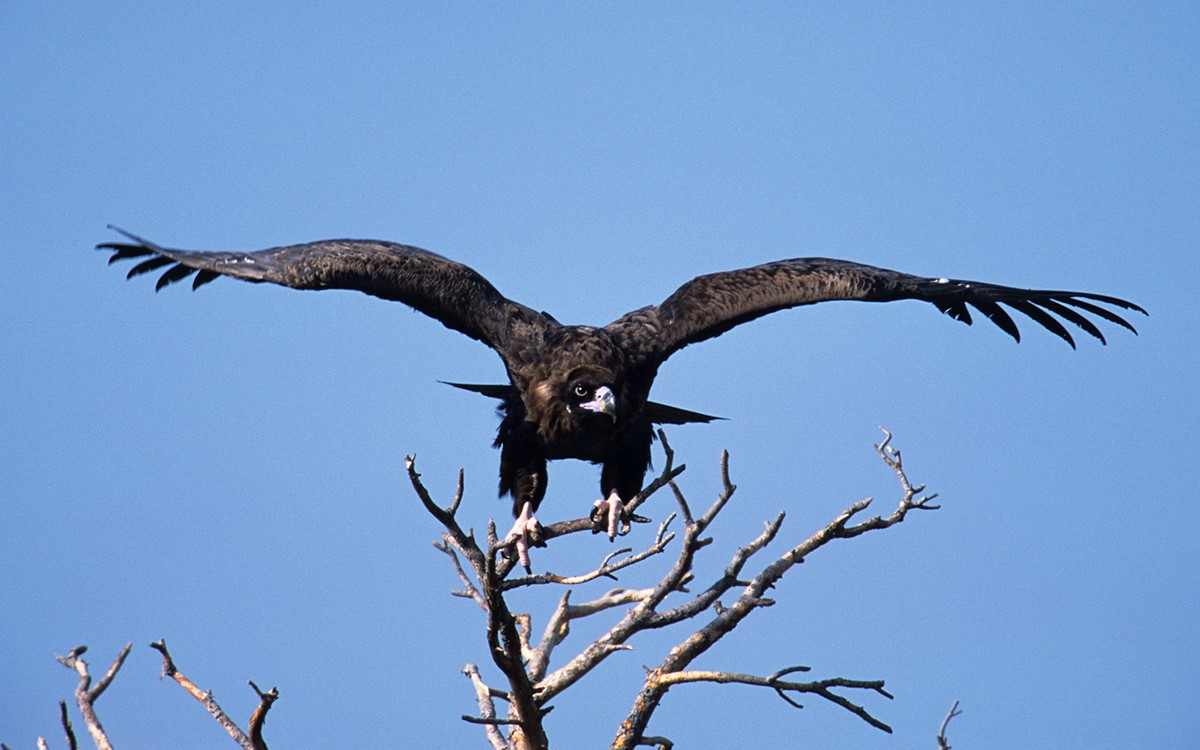
After an action-packed day in the national park, we will head to our hotel, located within the national park itself. Here we may get lucky and see or hear some of the area’s seven owl species, such as Eurasian Eagle-Owl, Tawny Owl, Little Owl, and Long-eared Owl.
Overnight: Dadia Forest National Park
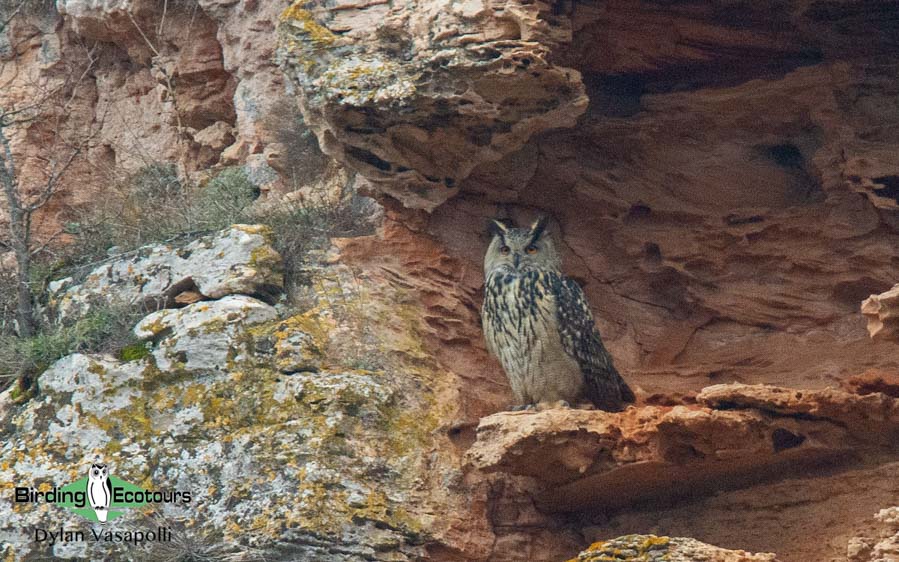
Day 8. Transfer to Nestos Delta National Park
After a relaxing breakfast we will transfer to the Nestos Delta, with its series of lagoons supporting a huge number of migrant and resident species every year. This is yet another incredibly bird rich area and there are simply too many possible species to list here. Some of the highlights we will look for include Mediterranean Gull, Slender-billed Gull, European Shag, Greater Flamingo, Eurasian Hoopoe, Syrian Woodpecker, Eurasian Penduline Tit, Spur-winged Lapwing, Long-eared Owl, Bearded Reedling (Bearded Tit), Ferruginous Duck, Caspian Tern, Spotted Redshank, Whinchat, and Greater White-fronted Goose.
The adjacent Lake Vistonis is a vital migratory staging post and wintering area which sees vast numbers of birds arrive during October. Here we can find Common Pochard, Eurasian Coot, and Great Cormorant numbering in the thousands while Little Grebe, Great Crested Grebe, Barn Swallow, and Common Starling can number in the hundreds.
Other star species around the lake include Dalmatian Pelican, Pygmy Cormorant, Black-throated Loon (Diver), Black-necked Grebe, Velvet Scoter, Kentish Plover, Whiskered Tern, White-headed Duck, Moustached Warbler, and Calandra Lark.
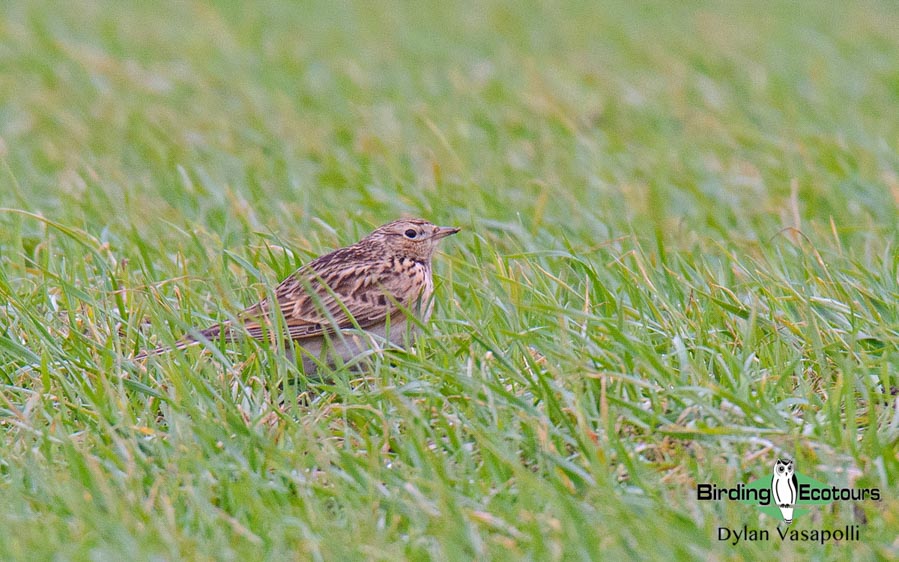
The delta is also an excellent area for birds of prey, drawn here by the volume of prey on offer. Key species possible include White-tailed Eagle, Western Marsh Harrier, Long-legged Buzzard, Levant Sparrowhawk, and Common Kestrel.
The beautiful riverine valley behind the delta is a great area to explore and in the Nestos Gorge we will look for Rock Partridge, Rock Bunting, Cirl Bunting, Sombre Tit, and the elusive Golden Jackal which is present here too.
Overnight: Toxotes
Day 9. Drive to Thessaloniki and departure
Today we will depart for Thessaloniki, with stops at wetlands along the way, as well as a picnic lunch en route. At these sites we may find species that have proven hard to find elsewhere on the tour, such as Mediterranean Gull, Black-throated Loon (Diver), Red-necked Grebe, Common Scoter, and Velvet Scoter. We may also visit the area around Nestos Gorge, once again, for further opportunities to find Rock Partridge, Rock Bunting, Cirl Bunting, and Sombre Tit.
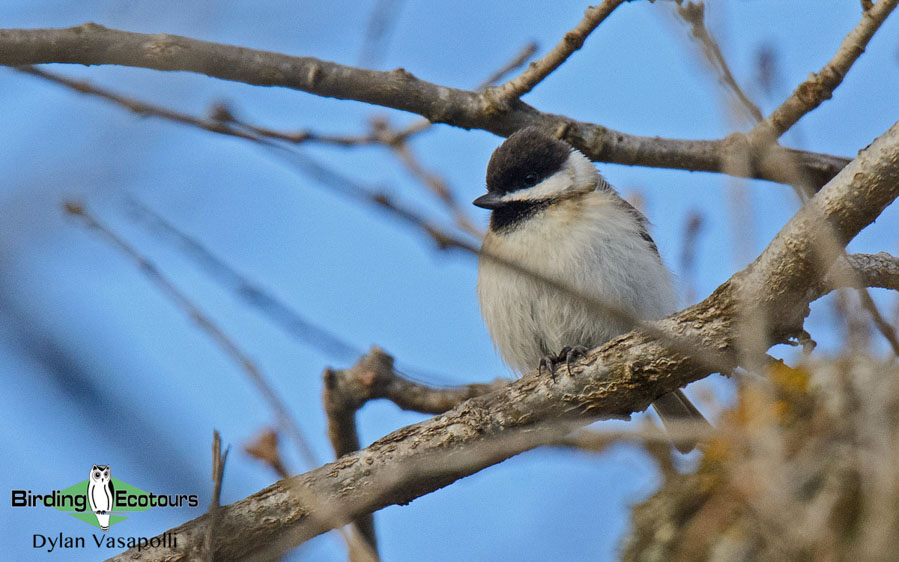
After lunch we will make our way to the Thessaloniki International Airport where we should arrive around mid-afternoon for our outbound flights in the evening. Prior to leaving, the local guide and Birding Ecotours tour leader will be on hand to answer any questions relating to the trip list or identification of species we have seen on the tour.
Overnight: Not included
Please note that the itinerary cannot be guaranteed as it is only a rough guide and can be changed (usually slightly) due to factors such as availability of accommodation, updated information on the state of accommodation, roads, or birding sites, the discretion of the guides and other factors. In addition, we sometimes must use a different international guide from the one advertised due to tour scheduling.
Download Itinerary